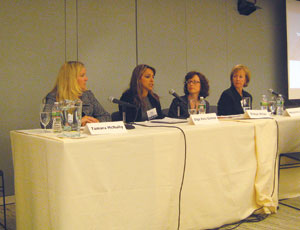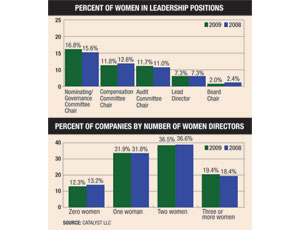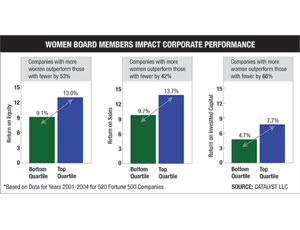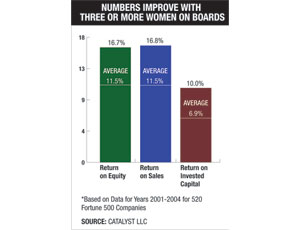Women are seeking careers in construction industry firms in record numbers, but they remain a rare sight at top-firm jobsites, executive suites and boardrooms. Research suggests, however, that women at the top can add to the bottom line. This sentiment was echoed by more than 130 attendees at a Nov. 3 industry networking conference in Washington, D.C.
Noting the historical dearth of women as field or office professionals, Kay Lantrip, vice president and head of federal projects at engineer-contractor URS Corp., noted the “double take” from men when a woman engineer walked on a jobsite in the 1970s and 1980s. While women are no longer such complete rarities, she and other attendees at the conference, sponsored by construction litigation firm Howrey LLP, Washington, D.C., say their potential for advancement and influence still trails that of their male cohorts.
“Even as the industry becomes familiar with meeting voluntary standards � to respond to market pressures and realities, gender diversity is not among them,” said Mildred Callear, executive vice president of Small Enterprise Assistance Funds, a Washington, D.C.-based investment management group for small and medium businesses. “There may be pressure today to build green buildings to [Leadership in Energy and Environmental Design] standards because customers and the public demand it, but no one asks whether engineering and construction firms that design and build them have a reasonable number of women in senior or board positions.”
Panelists noted the need for more women on board of directors, providing empirical data linking their involvement to better bottom-line profitability. In a 2007 study of Fortune 500 firms, researchers from Catalyst LLC found that companies with at least three women on their boards outperformed those with fewer female directors in return on equity, return on sales and return on invested capital (see charts).
Maryann Lavan general counsel of Lockheed Martin, Bethesda, Md., said women occupy two of Lockheed’s 11 board seats. AECOM only has 1 woman among its twelve board members, said chief counsel Robyn Miller, and Spanish contractor Dragados has yet to name a woman, according to Olga Polo Gomez, general counsel for its U.S.-based unit in New York City.
Panelists discussing career advancement in a post-recession world acknowledged that women suffer when revenue-producing programs are cancelled. Noted AECOM’s Miller, it is tough to keep an “engaged workforce when a program is put on hold.” Gomez urged women not to avoid taking risks. She was asked to take the top legal role for her firm in the U.S. with little notice and at a time when it was expanding and taking on complex legal transactions.
Lavan urged professional women, as they advance, to treat people well. “You never know who you’ll meet on the way up or down.” Barbara Wagner, Clark Construction senior vice president, cautioned attendees to “select your battles carefully. Pick and choose what matters.”
Callear said the industry “is ripe for some out-of-the-box breakthroughs,” noting, “[The U.S.] needs the talent of these women now in decision-making and oversight roles as well as out in the field, as engineering and construction move to the forefront of our economic recovery.” She urged women to embrace entrepreneurship, but AECOM’s Miller noted “conflict” in firms in supporting in-house women entrepreneurs who may then leave top management if they choose to start their own firms.





Post a comment to this article
Report Abusive Comment